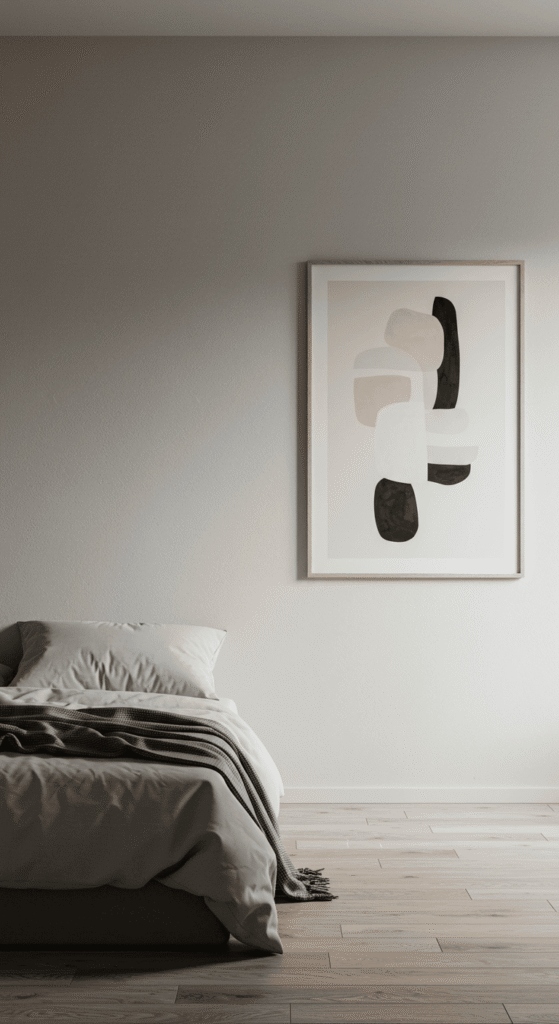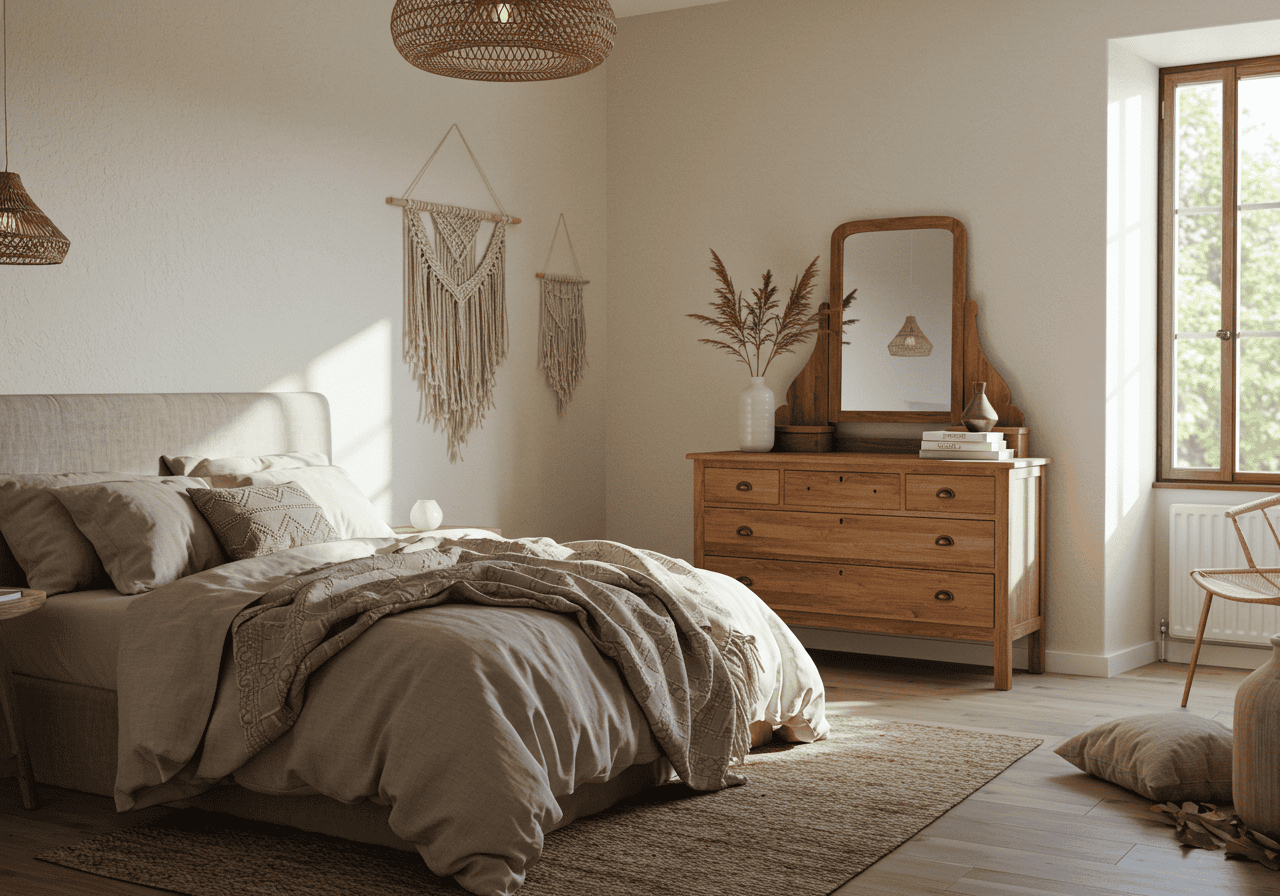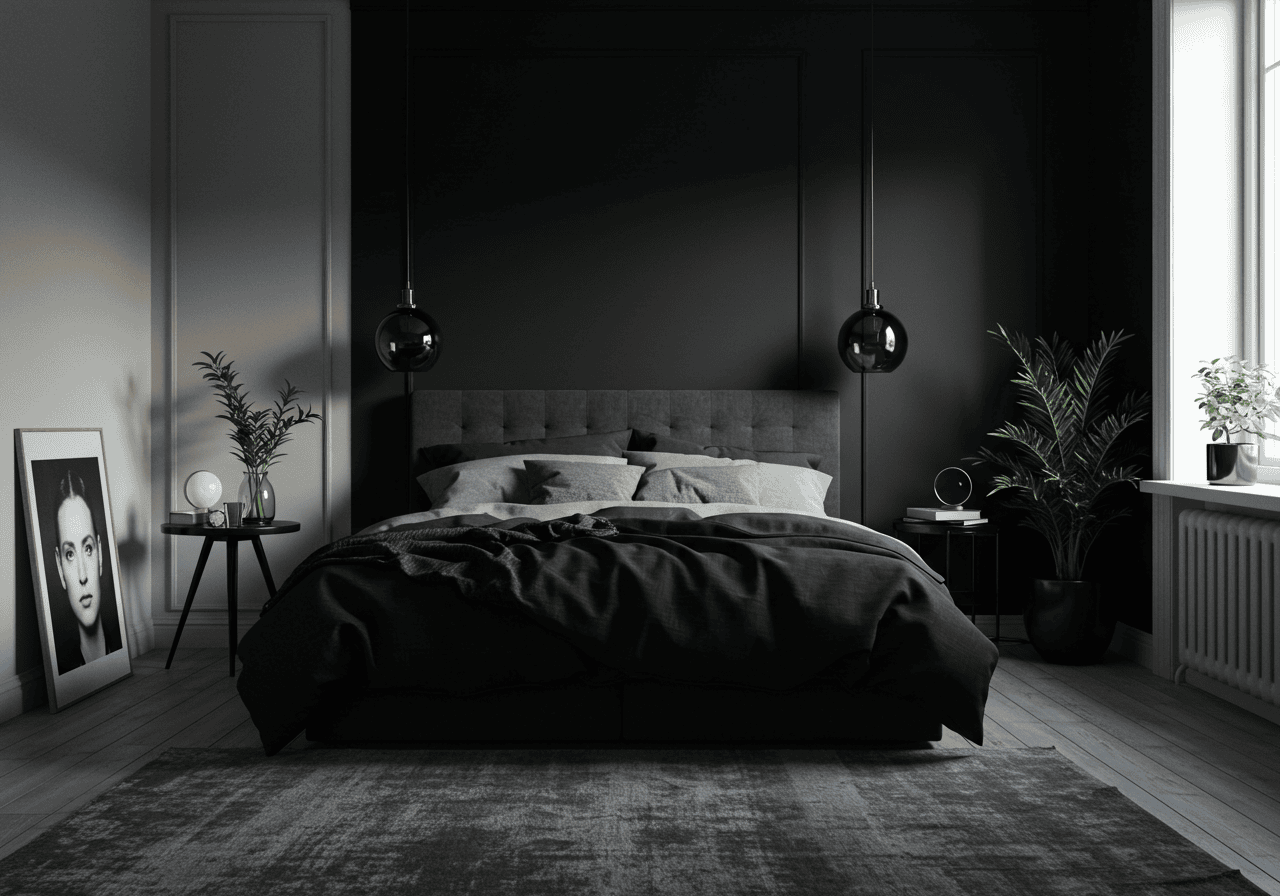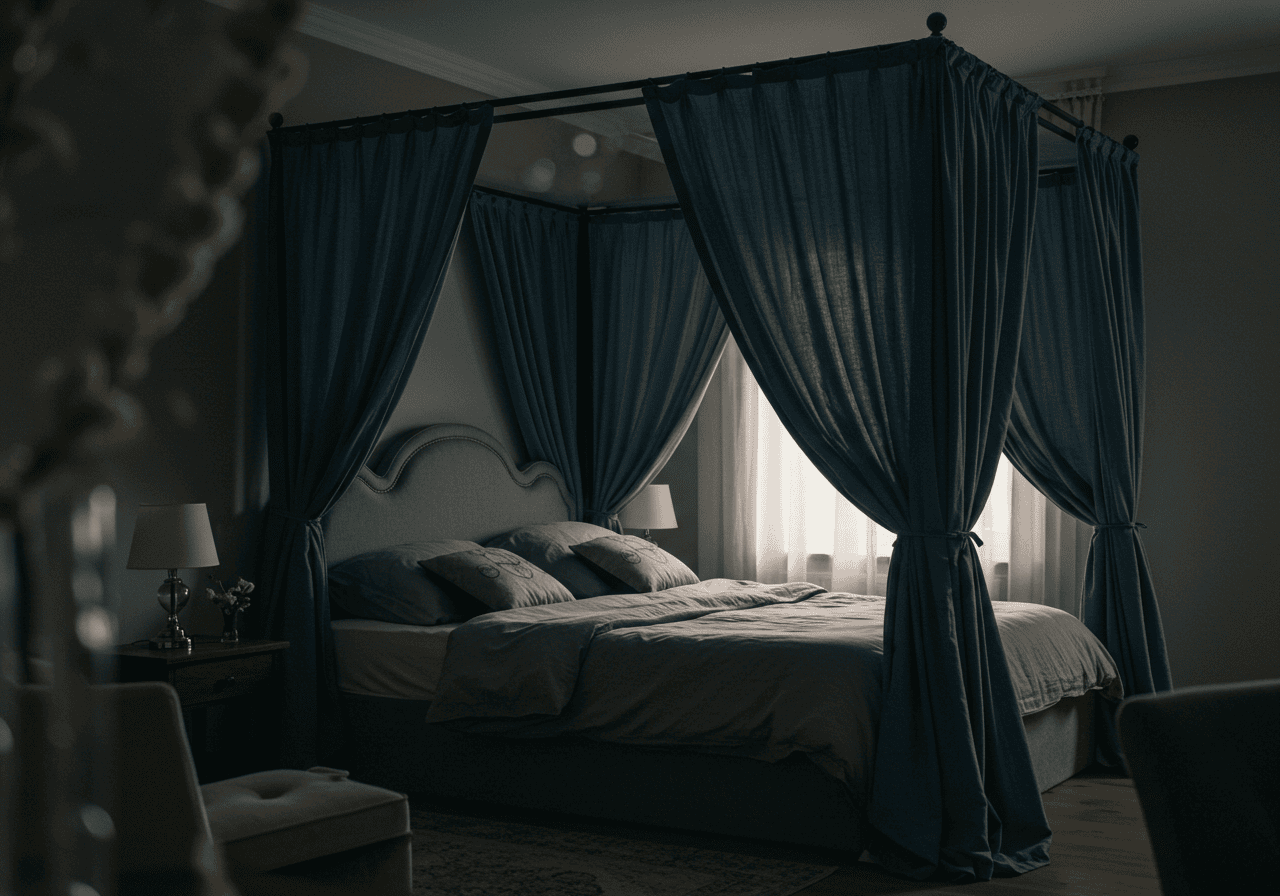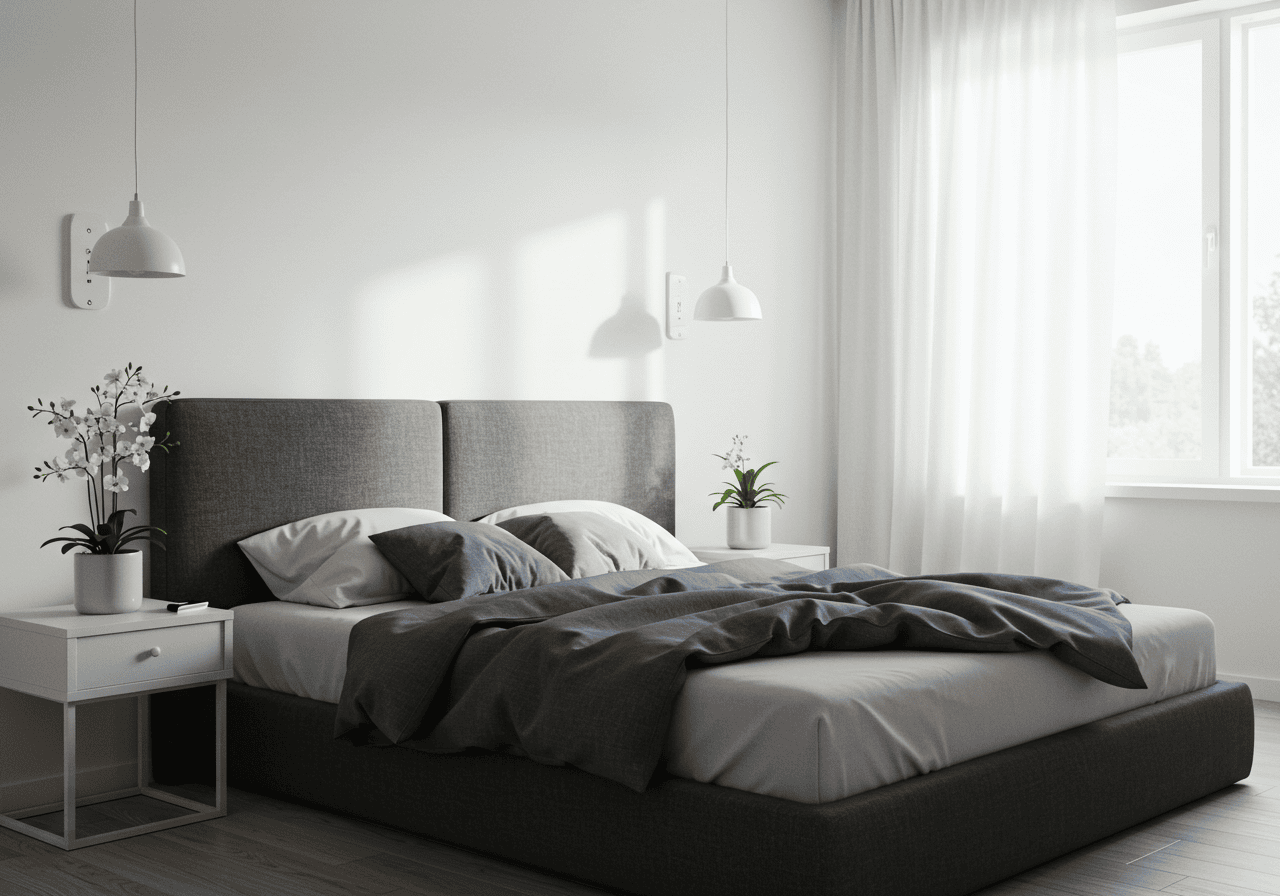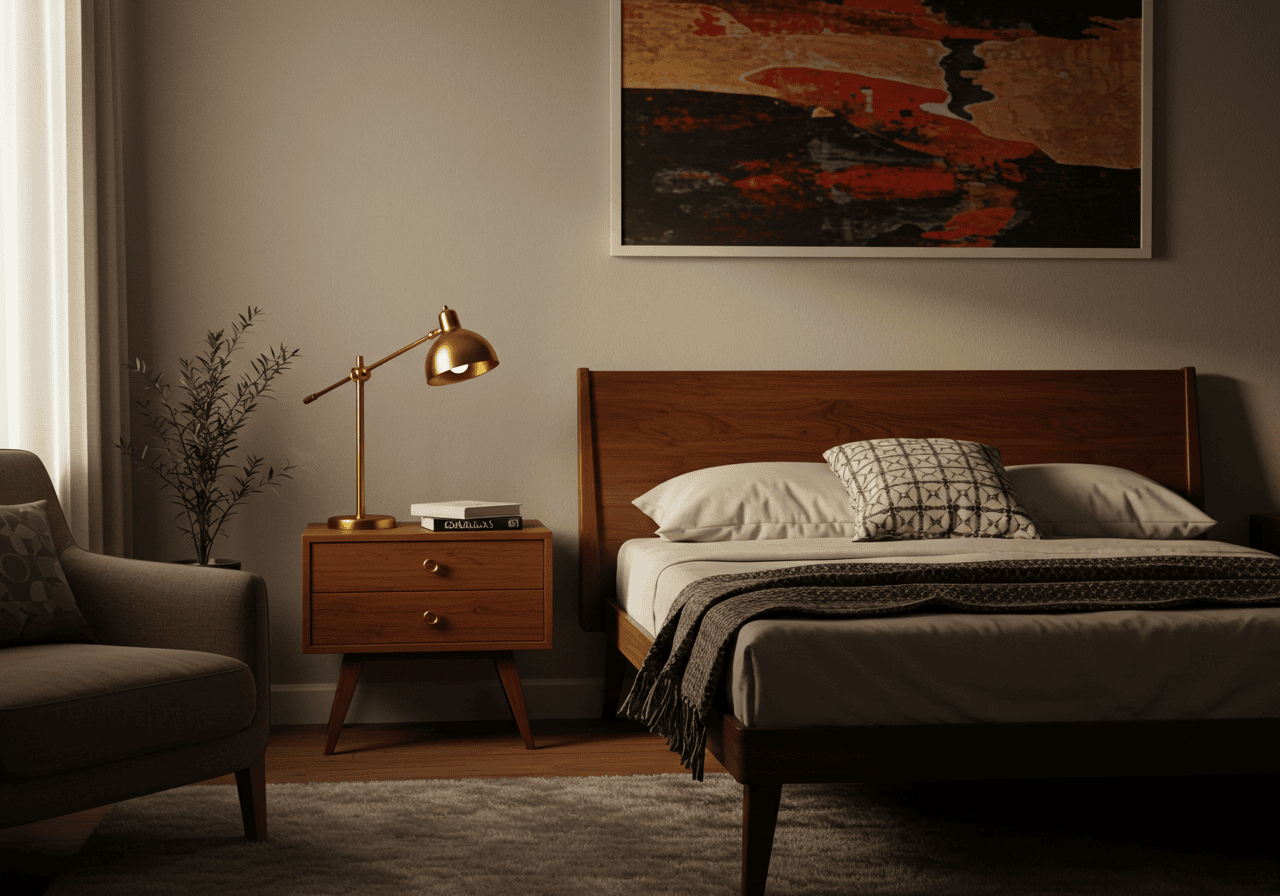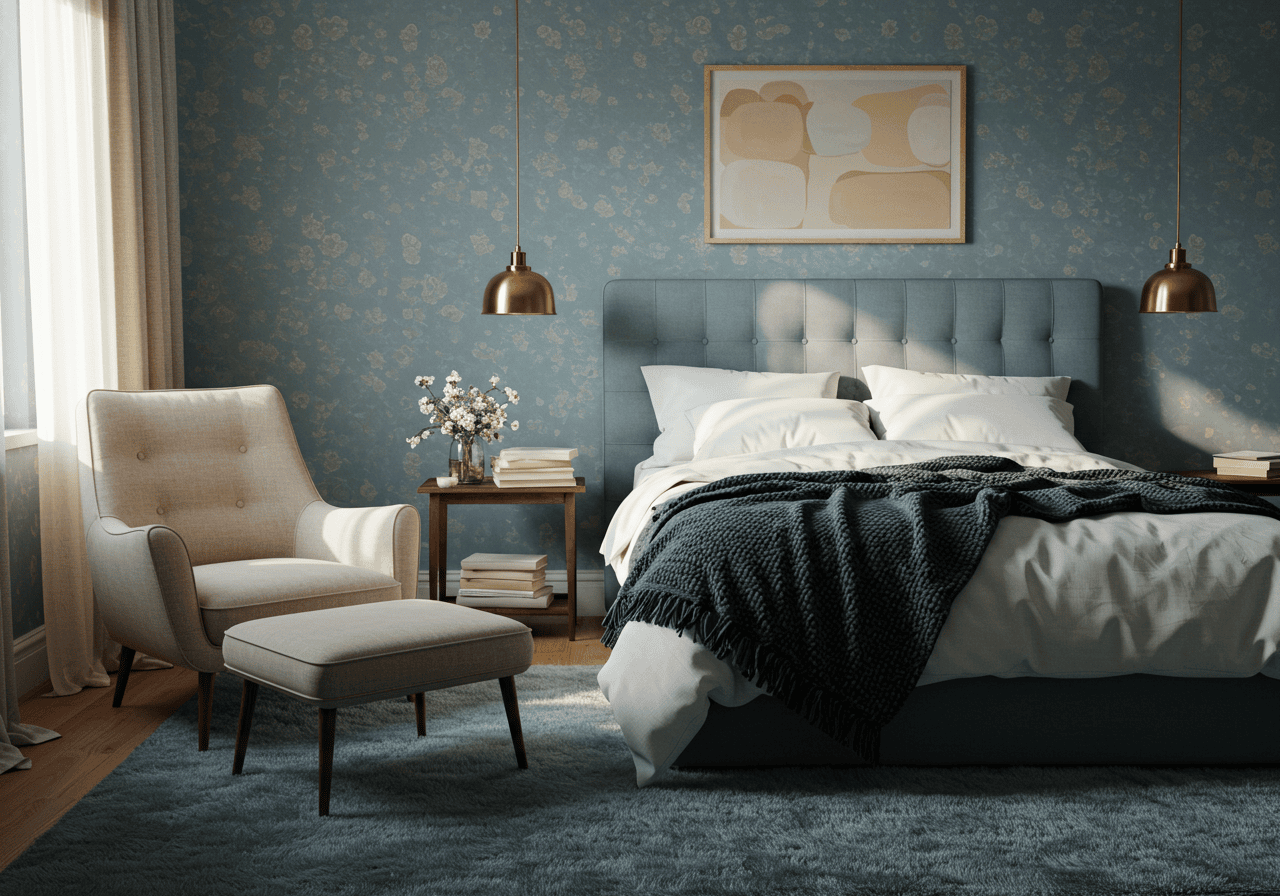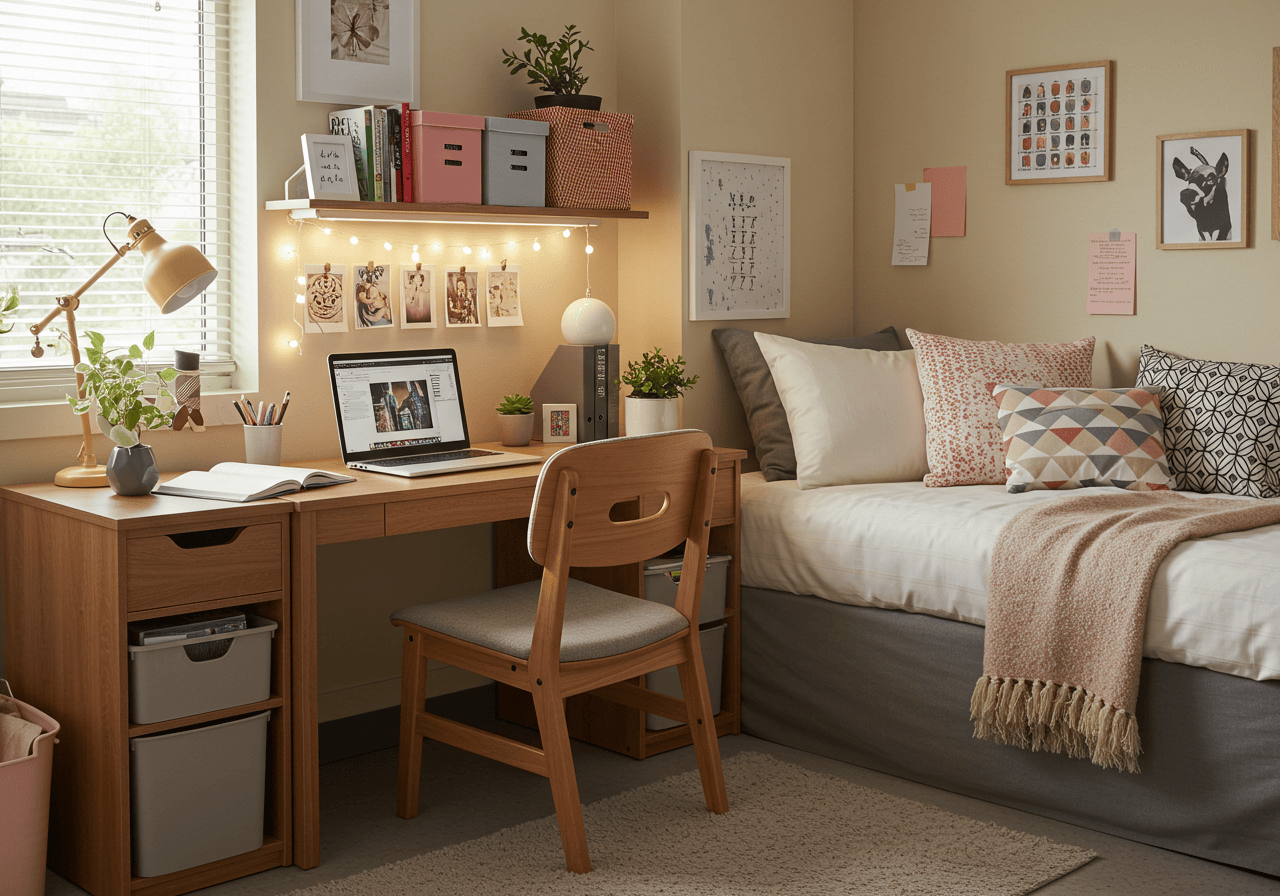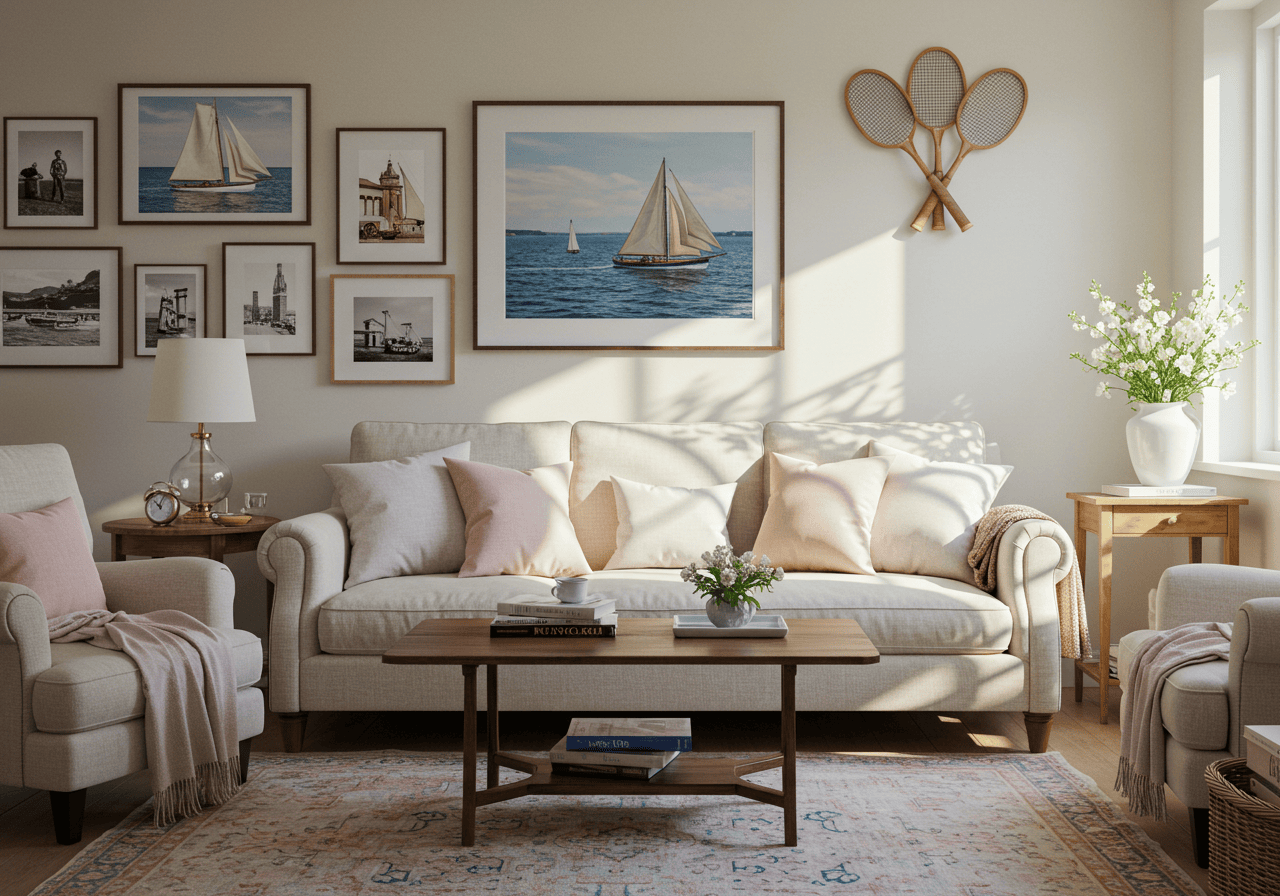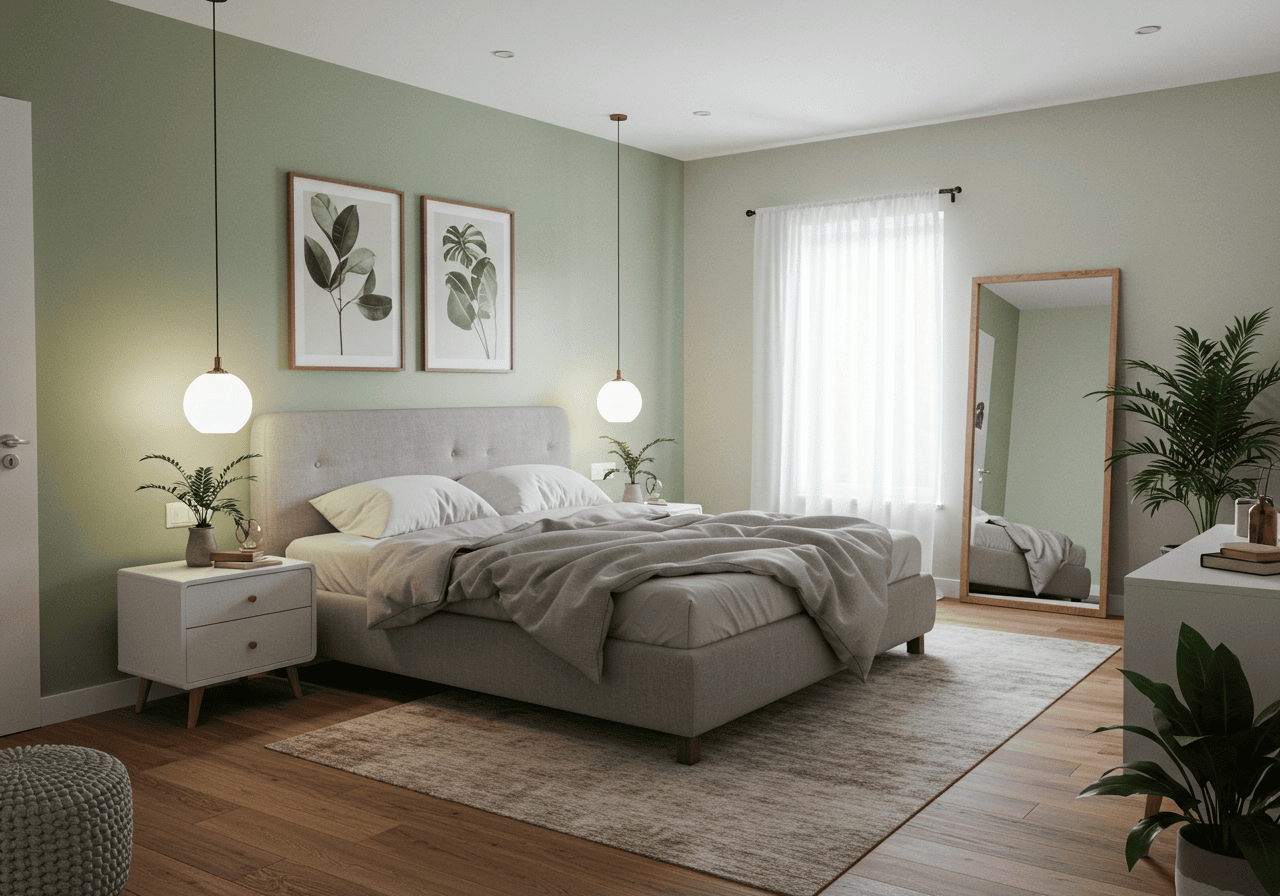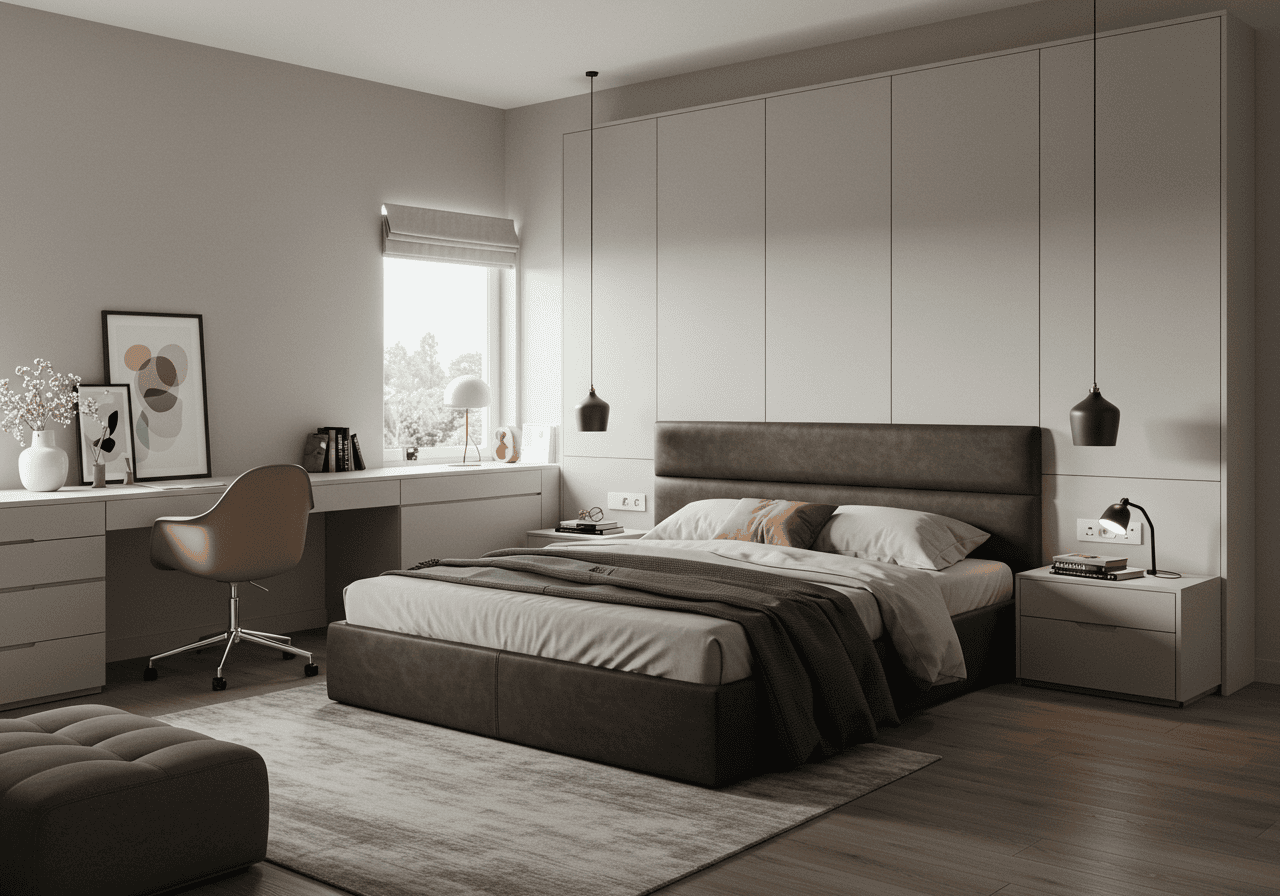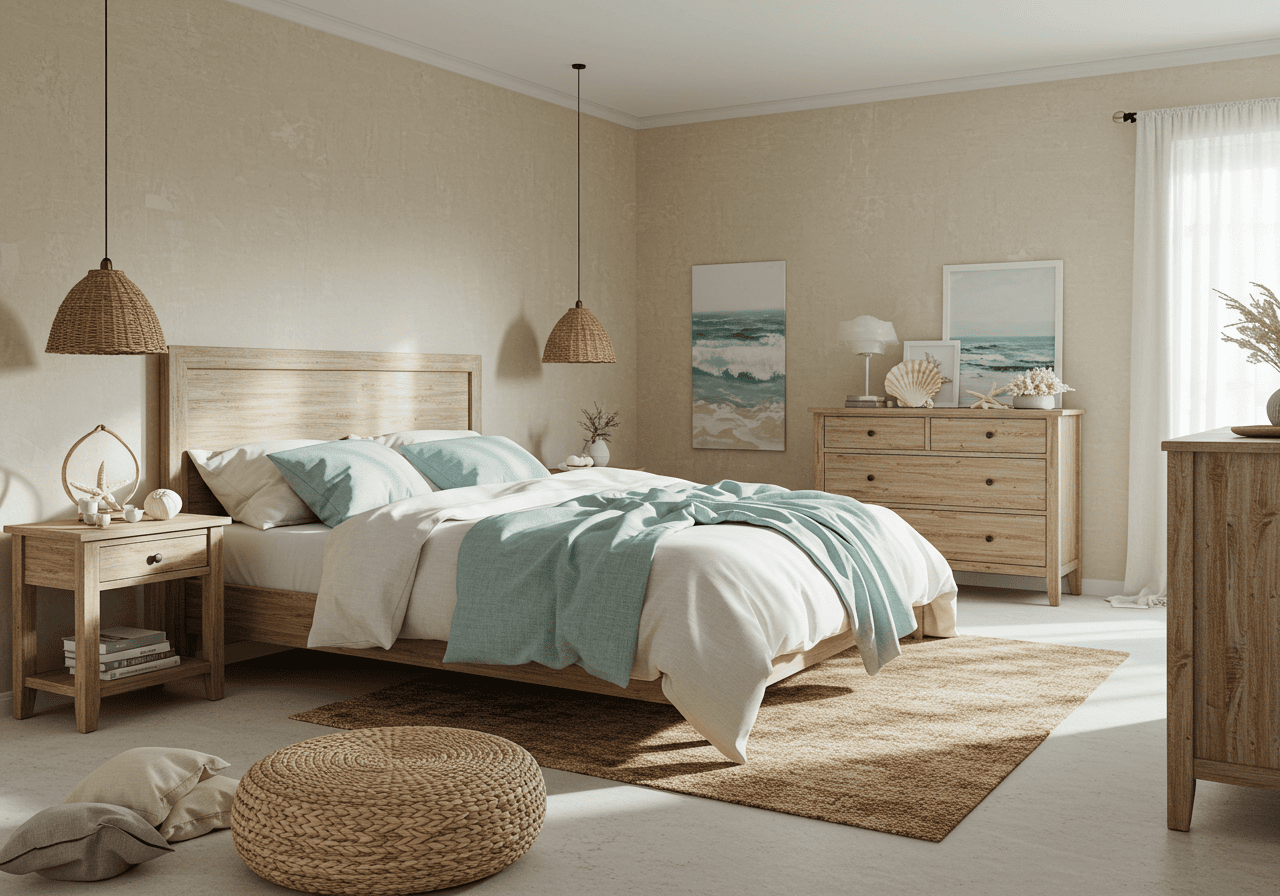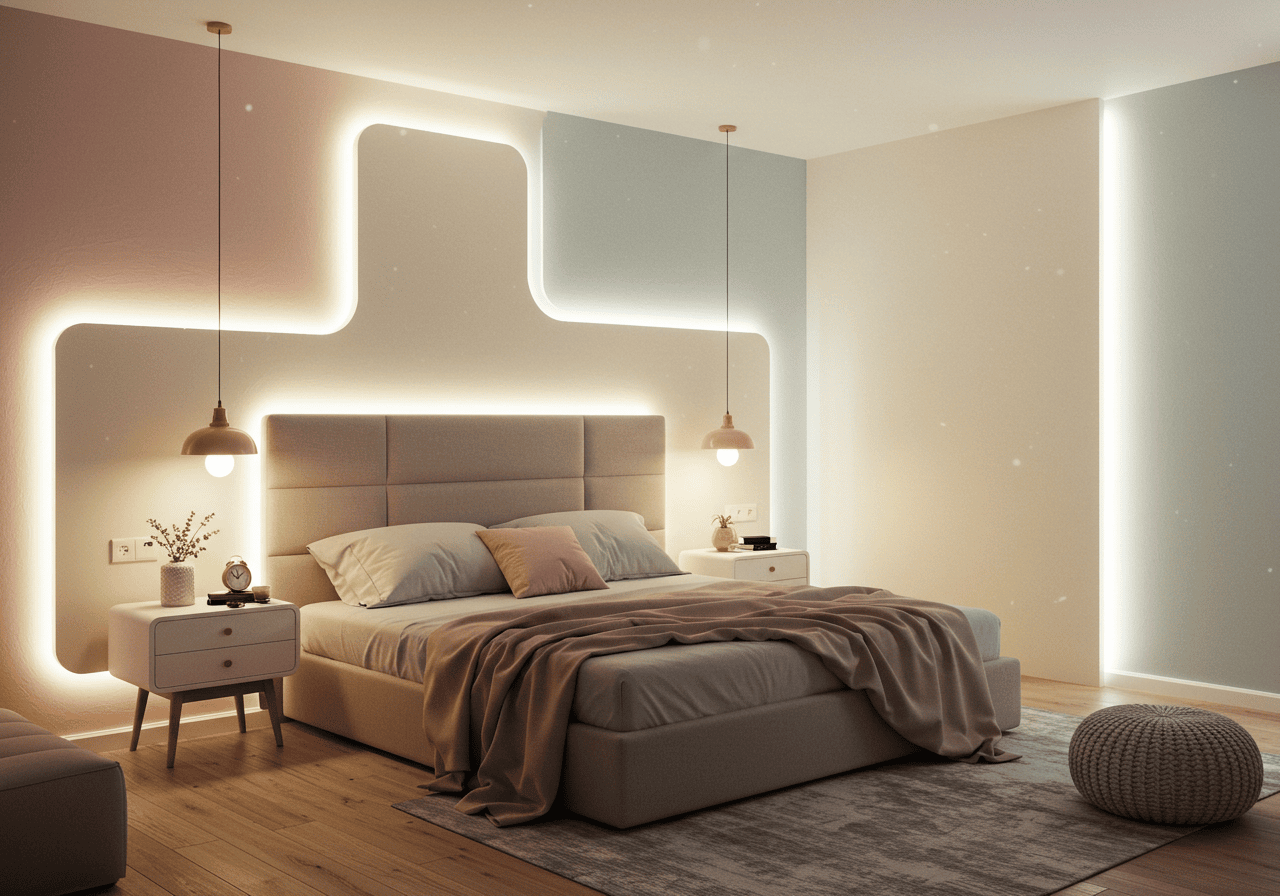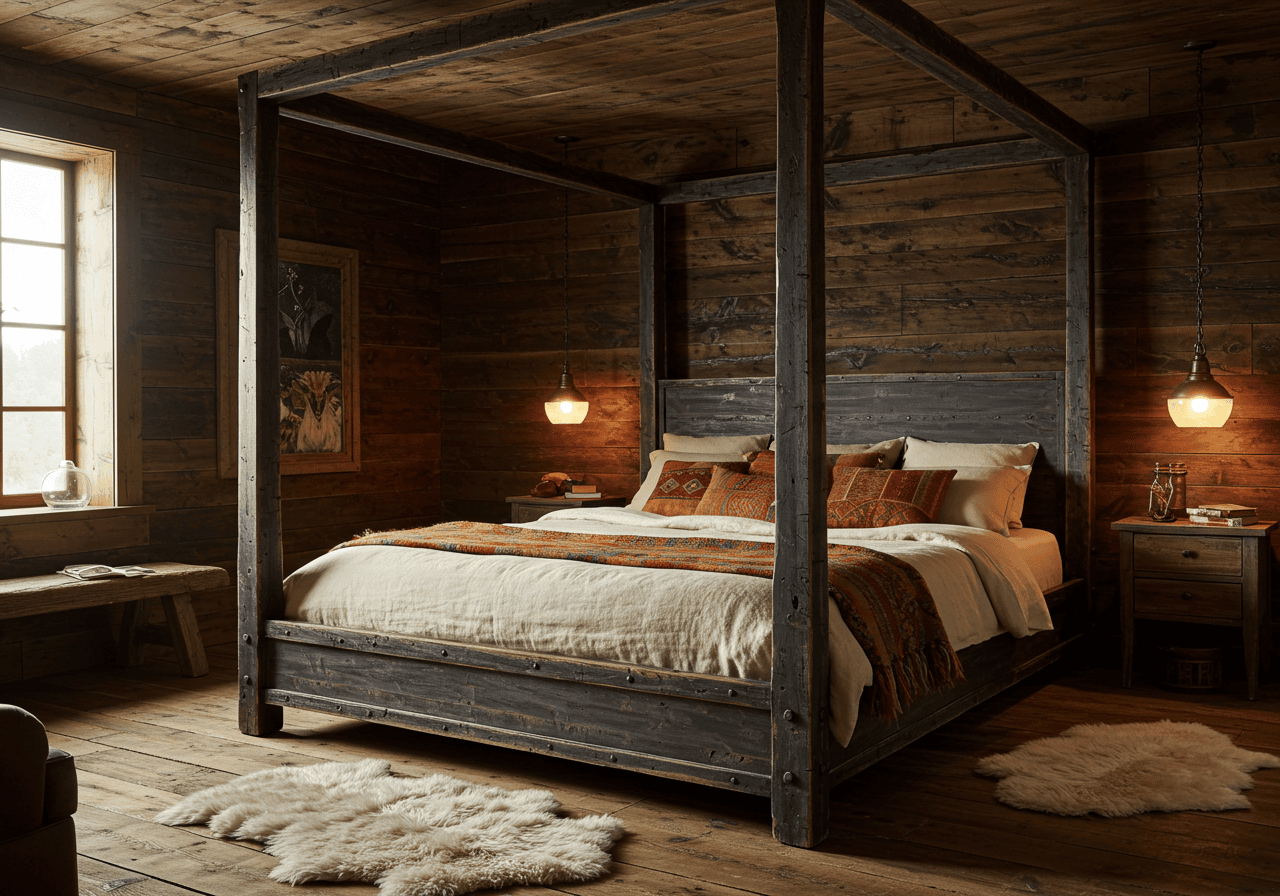Hey there, homebodies and design dreamers! Are you craving a bedroom that feels less like a storage unit and more like a serene sanctuary? A place where you can truly unwind, breathe easy, and escape the visual noise of everyday life? If you’re nodding along, then the minimalist bedroom aesthetic might just be your perfect match.
Minimalism isn’t about stark emptiness or cold, unwelcoming spaces. Far from it! It’s about intentional living, curating pieces you truly love and need, and creating an environment that promotes peace and clarity. It’s about making space – physically and mentally. Ready to transform your sleep space into a haven of calm sophistication?
Let’s dive into the first few minimalist bedroom ideas to get you inspired!
1. Master the Art of the Neutral Palette
Think of a neutral color scheme as the calming foundation upon which your minimalist bedroom rests. Soft whites, creamy beiges, gentle grays, and even muted earthy tones create an immediate sense of peace and spaciousness.
- Why it works: Neutral colors reflect light beautifully, making even small rooms feel larger and more open. They provide a serene backdrop that allows key furniture pieces or subtle textures to shine without overwhelming the senses.
- Expert Tip: Don’t think neutral means boring! Layer different shades and tints of the same neutral family (like various whites and creams) to add depth and sophistication. Focus on subtle variations rather than high contrast.
2. Declutter Like You Mean It (Seriously!)
This is the cornerstone of minimalism. A clutter-free space equals a clutter-free mind. Before you even think about decor, take a good, hard look at everything in your bedroom. Ask yourself: Do I truly need this? Does it bring me joy or serve a vital function?
- Why it works: Removing unnecessary items instantly reduces visual noise and creates a sense of order and tranquility. It makes cleaning easier and helps you appreciate the items you choose to keep.
- Actionable Step: Tackle one area at a time – the nightstand, the closet, under the bed. Be ruthless! Aim for clear surfaces, keeping only essential items easily accessible and storing the rest out of sight. Consider adopting a “one in, one out” rule for new purchases.
3. Prioritize Functional Furniture with Clean Lines
In a minimalist bedroom, every piece of furniture should earn its place. Opt for items with simple silhouettes, clean lines, and a clear purpose. Think less ornamentation, more elegant functionality.
- Why it works: Furniture with straightforward designs contributes to the room’s uncluttered feel. Pieces that serve a purpose (like a bed frame with built-in storage or a sleek, unadorned dresser) enhance the room’s utility without adding visual bulk.
- Smart Shopping: Look for quality craftsmanship and natural materials like wood or metal. Avoid overly decorative hardware or intricate carvings. Purposeful selection is key – choose fewer, better pieces.
4. Layer Textures for Warmth and Depth
Worried that a minimalist bedroom might feel cold or sterile? The secret weapon is texture! Incorporating a variety of tactile surfaces adds warmth, interest, and a cozy feel without relying on clutter or excessive color.
- Why it works: Texture engages the senses and adds dimension to a neutral space. It prevents the room from feeling flat and creates a subtle sense of luxury and comfort. Think of it as visual softness.
- Get Tactile: Mix materials like soft linen bedding, a chunky knit throw blanket, a smooth wooden bench, a woven jute rug, or even the subtle texture of plastered walls. Adding these elements is key to creating one of those truly cozy bedroom ideas that still feels clean and uncluttered.
5. Embrace Statement Lighting (That’s Still Simple)
Minimalism doesn’t mean boring lighting! In fact, a well-chosen light fixture can act as a functional sculpture in your space. Choose lighting that is simple in form but makes a quiet impact.
- Why it works: A unique light fixture draws the eye and adds personality without contributing to clutter. It provides essential illumination while doubling as a key design element. Think functional art.
- Expert Tip: Consider a sleek pendant light hanging low beside the bed instead of a traditional table lamp, or a sculptural floor lamp with clean lines. Dimmers are your best friend for controlling ambiance. Explore options like subtle LED lighting bedroom strips hidden behind a headboard for a soft glow.
6. Get Smart with Hidden Storage
Out of sight, out of mind – and crucial for a minimalist haven! Visible clutter is the enemy, so clever storage solutions are essential. Look for furniture that does double duty or ways to conceal necessary items.
- Why it works: Keeping belongings neatly stored away maintains those clean surfaces and open spaces vital to the minimalist aesthetic. It makes the room feel instantly calmer and more organized.
- Actionable Step: Opt for a bed frame with built-in drawers underneath. Utilize sleek, handleless wardrobes or cabinets that blend seamlessly with the wall. Use attractive baskets or boxes inside closets and drawers to organize smaller items. Maximize vertical space within closets.
7. Appreciate the Power of Negative Space
In design, negative space refers to the empty areas around and between objects. In a minimalist bedroom, this “breathing room” is just as important as the furniture itself. Don’t feel the need to fill every wall or corner.
- Why it works: Negative space allows the eye to rest and emphasizes the items you have chosen to display. It creates a sense of calm, spaciousness, and luxury – proving that less truly can be more. It’s fundamental to many modern bedroom designs.
- Mindful Placement: Be intentional about where you place furniture and decor. Leave ample space around key pieces like the bed or a reading chair. Allow walls to remain largely bare to enhance the feeling of openness.
8. Incorporate Natural Elements
Bring the calming influence of the outdoors inside! Natural materials like wood, stone, cotton, linen, and plants add warmth, texture, and life to a minimalist space, preventing it from feeling too stark or clinical.
- Why it works: Natural elements provide organic texture and subtle color variations that soften the clean lines of minimalist design. They connect us to nature, promoting a sense of peace and well-being.
- Easy Additions: Introduce a potted plant (like a snake plant or ZZ plant, known for being low-maintenance), a light wood bench at the foot of the bed, linen curtains, or even a simple vase with a few dried branches. These touches can give a subtle nod to beach-inspired bedrooms without being overly thematic.
9. Use Mirrors Strategically
Mirrors are fantastic tools in a minimalist bedroom. They reflect light, create the illusion of more space, and can double as simple, functional wall decor.
- Why it works: By bouncing light around the room, mirrors make the space feel brighter and airier. Placed strategically, they can also reflect a nice view or an attractive feature, adding depth without adding clutter.
- Placement Ideas: Lean a large, full-length mirror with a simple frame against one wall. Hang a round mirror with a minimal frame above a dresser. Avoid overly ornate frames – keep the silhouette clean and simple.
10. Choose One Impactful Piece of Art
Instead of a gallery wall or multiple small pieces, consider investing in one single piece of art that truly speaks to you and complements the room’s serene vibe.
- Why it works: A single, larger piece creates a strong focal point without overwhelming the space. It adds personality and a curated feel, demonstrating intentionality in your decor choices. It elevates the room from merely functional to thoughtfully designed, a key aspect of creating an aesthetic bedroom.
- Selecting Wisely: Choose art with colors that echo your neutral palette or introduce a subtle, complementary hue. Abstract pieces, line drawings, or black and white photography often work well in minimalist settings. Ensure the frame is simple and complements the artwork and room.
11. Embrace Symmetry for Ultimate Calm
Our brains are naturally drawn to symmetry and balance; it creates an inherent sense of order and harmony. Applying this principle in your minimalist bedroom can significantly enhance its calming effect.
- Why it works: Symmetrical arrangements feel intentional, balanced, and visually restful. It eliminates the feeling of randomness or chaos, contributing to a serene atmosphere. Think visual equilibrium.
- Achieve Balance: Arrange nightstands and lamps symmetrically on either side of the bed. If you have artwork above the bed, center it precisely. Balance a taller element on one side of the room (like a floor lamp) with something of similar visual weight on the other (perhaps a tall plant or a leaning mirror).
12. Opt for Simple Window Treatments
Heavy, ornate curtains can weigh down a minimalist space. Choose window treatments that are functional, simple, and allow for light control.
- Why it works: Simple window coverings maintain clean lines and don’t distract from the overall serene aesthetic. They allow you to maximize natural light during the day while providing privacy when needed.
- Best Bets: Consider sheer linen or cotton curtains that diffuse light beautifully, simple roller blinds in a neutral color, or sleek wooden or faux-wood blinds that tie in with other natural elements in the room. If you love the drama of curtains but want to keep it minimal, perhaps consider simple drapes framing a canopy bed with curtains made of light, airy fabric.
13. Introduce Subtle Patterns (If Any)
While minimalism often favors solid colors, a very subtle pattern can add interest without disrupting the calm. Think delicate stripes, a soft geometric motif, or an organic texture that reads as a pattern.
- Why it works: A controlled use of pattern prevents monotony in a highly neutral space. It adds a layer of visual detail that is quiet rather than loud, contributing to a sophisticated feel.
- Expert Tip: Apply pattern sparingly – perhaps on one set of accent pillowcases, a single throw, or a low-contrast rug. Avoid bold, busy patterns that create visual clutter. The key is subtlety and restraint.
14. Consider Minimalist Flooring Choices
The floor is a large surface area that significantly impacts the room’s overall feel. Minimalist flooring is typically characterized by clean lines, neutral colors, and smooth or subtly textured surfaces.
- Why it works: Uncluttered flooring visually expands the space and provides a clean foundation for the rest of your decor. It avoids busy patterns or jarring transitions that can disrupt the room’s tranquility.
- Top Options: Light-colored hardwood floors (like maple or ash), polished concrete, large-format neutral tiles, or even high-quality vinyl planks in a simple finish are excellent choices. If using rugs, opt for solid colors or very subtle textures/patterns, and ensure they ground the space without overwhelming it. A simple jute or wool rug often complements the aesthetic well, tying into a coastal bedroom decorating feel if desired, but keeping it fundamentally minimalist.
15. Embrace the Beauty of Imperfection (Wabi-Sabi)
Minimalism doesn’t have to mean flawless perfection. Incorporating elements of Wabi-Sabi – the Japanese aesthetic appreciating beauty in imperfection, impermanence, and incompleteness – can add soul and warmth.
- Why it works: Handcrafted items, slightly uneven textures, or naturally aged materials bring character and a human touch to a minimalist space. It prevents the room from feeling too sterile or mass-produced and adds a layer of authentic charm.
- Find the Beauty: Look for handmade ceramics, textiles with natural variations (like linen), aged wood finishes, or objects with a unique history. This philosophy pairs beautifully with Mid-Century Modern bedroom elements, which often feature natural materials and organic shapes.
16. Go Monochromatic (Or Close To It)
For a truly cohesive and calming look, consider a monochromatic color scheme. This involves using different tints, tones, and shades of a single color throughout the room.
- Why it works: A monochromatic palette is inherently restful and sophisticated. It simplifies the visual landscape, allowing textures and forms to take center stage. It’s a hallmark of streamlined design.
- Shades of Chic: While white or grey are popular choices, you could explore soft blues, muted greens, or even sophisticated darker tones. For a bold yet minimal statement, consider layers of deep charcoal or even explore ideas for a refined black bedroom using varying textures to keep it from feeling flat.
17. Ensure Furniture is Scaled Appropriately
In minimalism, balance and proportion are key. Avoid oversized, bulky furniture that can overwhelm the space, especially in smaller rooms. Choose pieces that fit the scale of your bedroom.
- Why it works: Appropriately scaled furniture contributes to the feeling of openness and prevents the room from feeling cramped or cluttered. It respects the negative space we talked about earlier.
- Measure Twice: Before buying, measure your room and map out furniture placement. Look for pieces with a smaller footprint or a lighter visual weight (e.g., beds with legs rather than solid bases, slender nightstands). This is particularly important when designing bedroom ideas for couples to ensure ample space for movement.
18. Let Natural Light Be the Star
Maximize the natural light available in your bedroom. It’s the best accessory – it costs nothing, makes spaces feel larger and more inviting, and enhances mood.
- Why it works: Abundant natural light is intrinsically linked to well-being and highlights the clean lines and textures of a minimalist interior beautifully. It reduces the need for excessive artificial lighting during the day.
- Maximize the Rays: Keep window areas unobstructed. Use mirrors to reflect light, as mentioned earlier. Choose light paint colors for walls and ceilings to bounce light around. Keep window treatments simple and easy to pull back completely. Consider sheer fabrics that filter light without blocking it.
19. Opt for Floating Shelves or Nightstands
Maximize floor space and create a lighter, airier feel by choosing wall-mounted storage options like floating shelves or nightstands.
- Why it works: Lifting furniture off the floor reduces visual weight and makes cleaning easier. It enhances the sense of spaciousness and contributes to the clean, uncluttered lines central to minimalism. It’s a sleek, modern touch.
- Implementation: Replace traditional bulky nightstands with simple floating shelves just large enough for essentials. Use narrow floating shelves on a wall for displaying a very small, curated selection of decor instead of using a console table. Ensure secure installation!
20. Consider Air Quality and Subtle Scents
Minimalism isn’t just about what you see; it’s about the overall feeling of the space. Clean air and a subtle, natural scent can significantly enhance the tranquility of your bedroom sanctuary.
- Why it works: A fresh, airy environment promotes relaxation and better sleep. Gentle, natural scents can soothe the mind without being overwhelming, unlike heavy artificial fragrances which can feel like clutter for the senses.
- Breathe Easy: Keep windows open when possible for fresh air circulation. Consider an air purifier if needed. Introduce subtle scents through essential oil diffusers (using calming oils like lavender or chamomile), natural soy candles with simple scents, or even just fresh linen spray. This focus on sensory details can elevate the ambiance, subtly contributing to romantic bedroom ideas through atmosphere rather than overt decor.
21. Add Personality with Mindful Curation
Minimalism doesn’t mean stripping away all personality! Your bedroom should still feel like you. The key is to be highly selective and display only a few items that hold genuine meaning or aesthetic value.
- Why it works: Carefully chosen personal touches prevent the space from feeling sterile and make it uniquely yours. They tell a story and bring joy without adding clutter. It’s about intentional display, not accumulation.
- Curate Your Collection: Choose one or two framed photos of loved ones, a treasured souvenir from a special trip, a favourite plant, or a beautiful object you truly love. Group small items together on a tray to keep them contained. If your personal style leans coastal, perhaps a single piece of smooth driftwood or a framed seascape photo could be your curated touch, tying into coastal bedroom decorating without going full-theme.
Your Peaceful Retreat Awaits
And there you have it – 21 ideas to help you craft the minimalist bedroom of your dreams! Remember, minimalism is a personal journey. It’s about finding what brings you peace and clarity, not adhering to rigid rules.
Start small, focus on intention, and enjoy the process of creating a space that truly nurtures your well-being. By embracing clean lines, thoughtful curation, and the beauty of simplicity, you can transform your bedroom from just a place to sleep into a genuine sanctuary for rest and rejuvenation. Sweet dreams!








